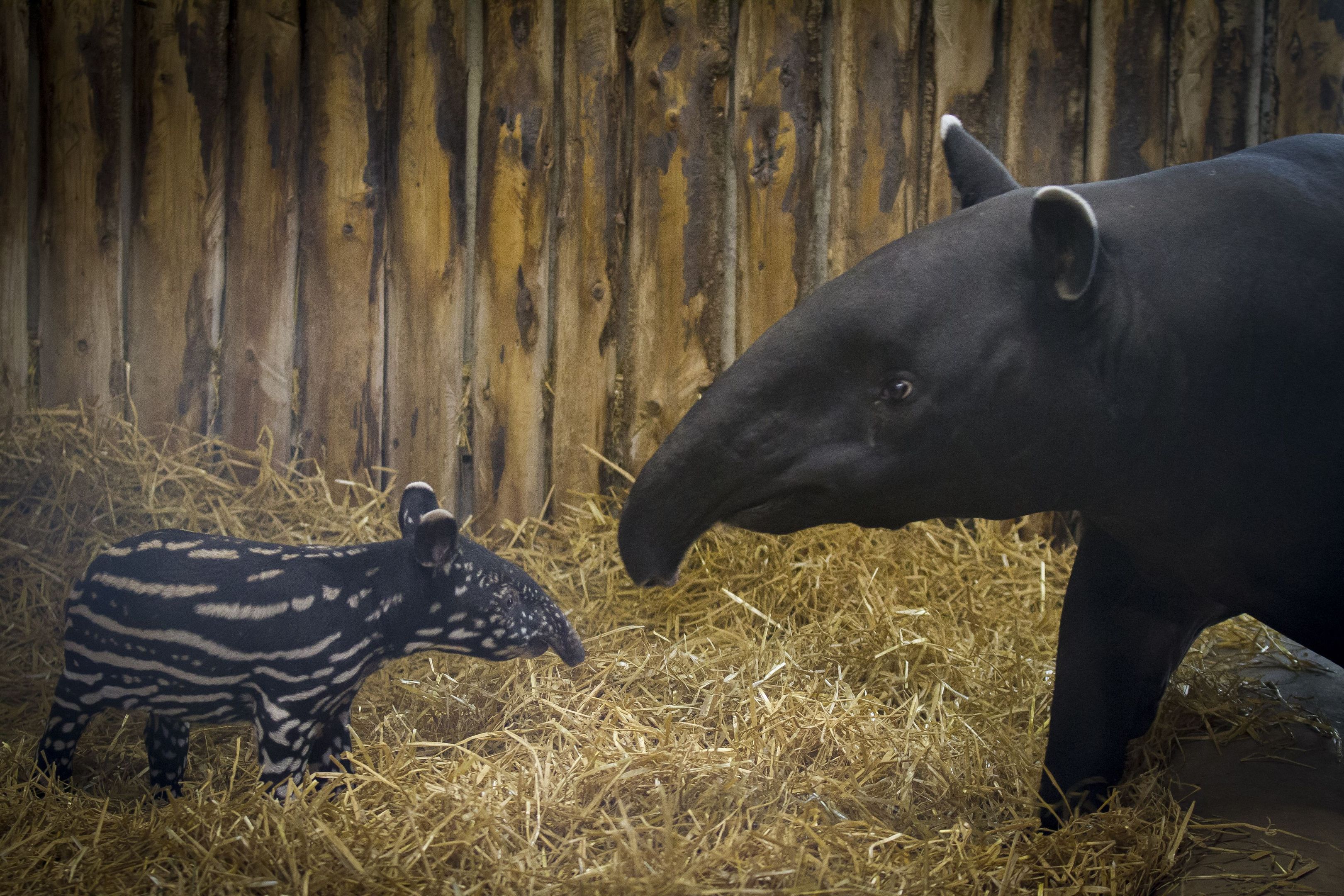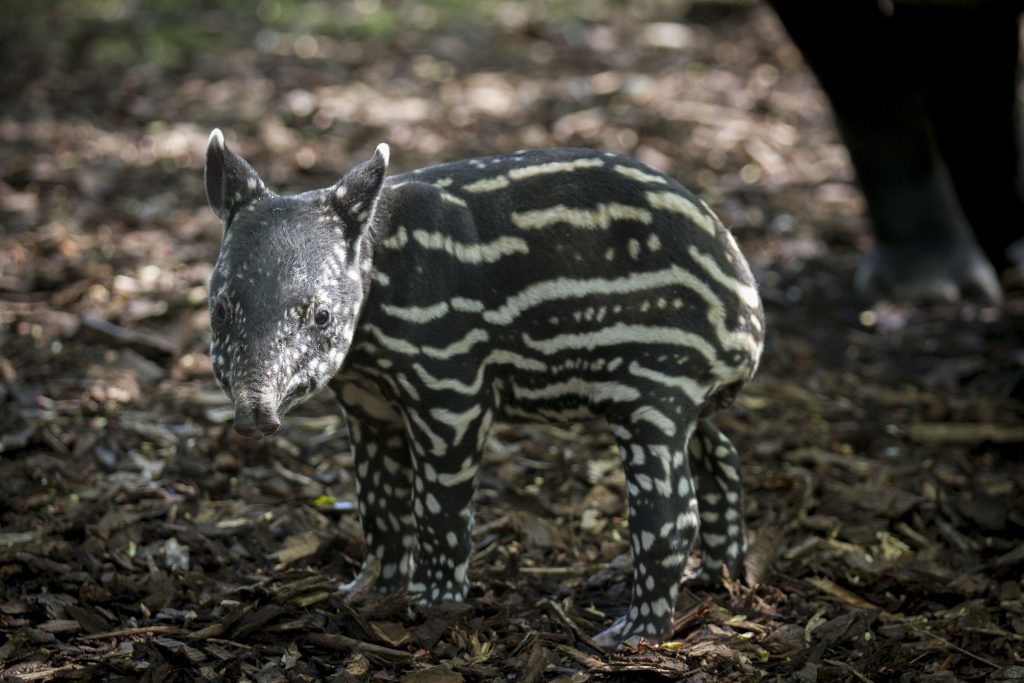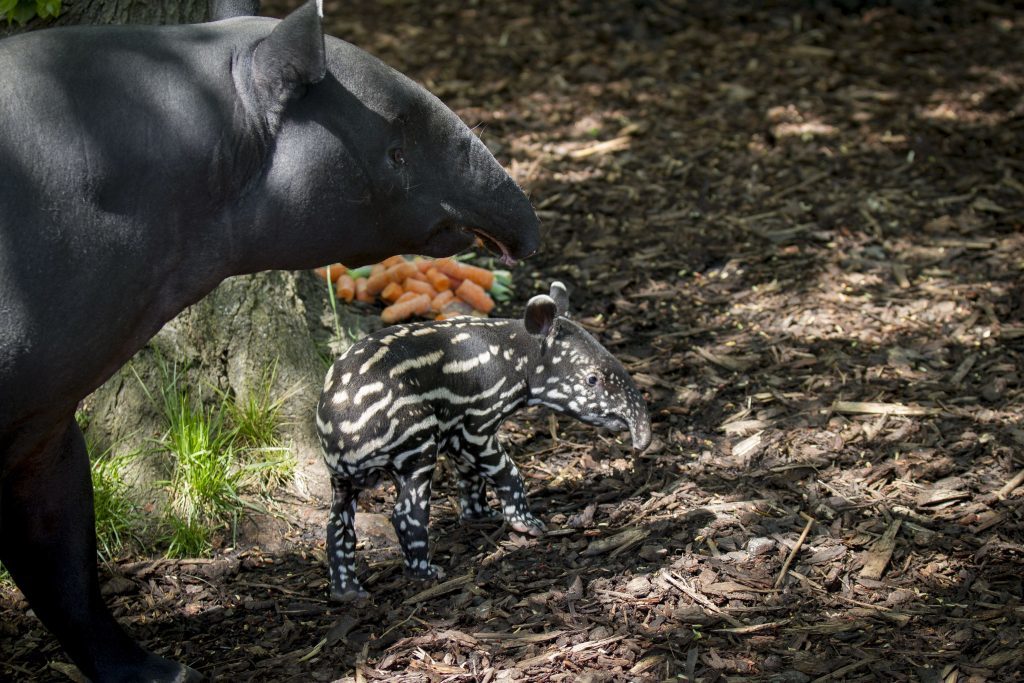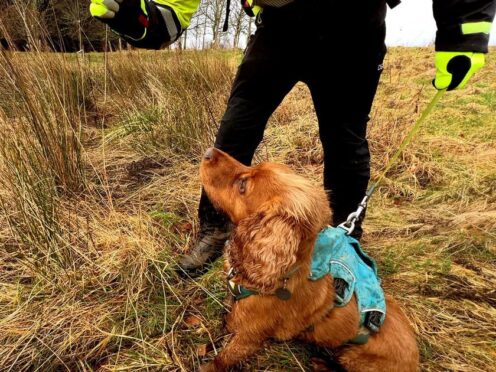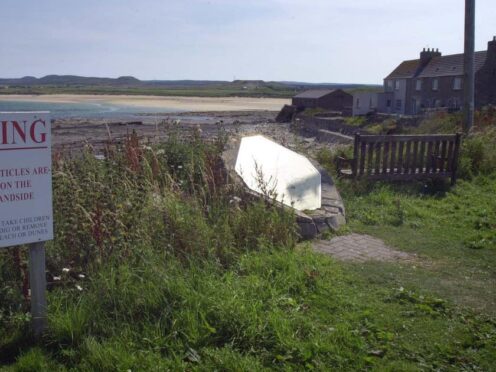Zookeepers have photographed an endangered Malayan tapir calf taking its first steps outside.
The youngster weighed just 24lb (11kg) at birth but will double in size over the coming weeks and could eventually weigh up to 50st (320kg) and grow to 8ft (2.4m) in length and 3ft 6in (1.1m) tall.
The rare calf was born at Edinburgh Zoo to mother Sayang and father Mowgli on Thursday May 19 and keepers said he will help the fight to save his species from extinction.
Images of the calf venturing into the outdoors for the first time were captured on Monday.
Karen Stiven, hoofstock keeper at the zoo, said: “The tiny calf is doing very well and, whilst he is staying close to his mother, he has been rambling around a bit on his small shaky legs to explore his surroundings.
“On Monday afternoon he took his first tentative steps into the outdoor paddock and was even brave enough to take a few splashes in the pond.
“The birth of this calf is very significant as he will go on to play a role in the conservation of this rare species as, once he is old enough, he will join the European Endangered Species Breeding Programme to help augment a safety-net population for this species, ensuring they do not go extinct.
“Royal Zoological Society of Scotland Edinburgh Zoo has had great husbandry success with this increasingly threatened tapir species.”
The calf’s brown coat is striped and dotted with white, designed to provide camouflage in the forest, but after a few months he will start to lose the pattern and by six months he will resemble a miniature adult tapir with a stocky black body and white or grey midsection.
The species, native to the rainforests of Burma, Malaysia, Sumatra and Thailand, is listed as endangered on the International Union for the Conservation of Nature Red List and population numbers are continuing to decline due to habitat loss and hunting.
The population is estimated to have fallen by more than 50% in the past 36 years, primarily as a result of tapir habitat being converted into palm oil plantations.
Also known as the Asian tapir, the Malayan tapir is the largest of four tapir species. The animals’ noses and upper lips are extended to form a prehensile proboscis, which they use to grab leaves.
